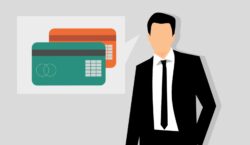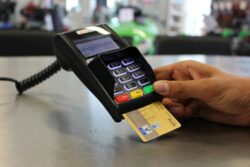How to prevent unauthorized transactions from happening again
Credit card fraud has emerged as a significant concern in the contemporary world, posing substantial risks to personal financial security. This issue necessitates a comprehensive understanding of appropriate response measures to fraudulent charges and unauthorized transactions on credit cards.

This article offers an in-depth examination of the steps involved in identifying suspicious activities, recording these instances, communicating with credit card providers, filing disputes, and following up accordingly.
Furthermore, it emphasizes the importance of personal information protection, the implementation of credit monitoring services and the recognition of common credit card scams.
By providing guidelines to ensure vigilance against future fraud, the article aims to equip readers with the tools to safeguard their financial assets effectively.
The discussion is rooted in a profound understanding of the subject, aiming to persuade individuals about the importance of proactive measures in managing credit card fraud.
Key Takeaways
- Regularly review credit card statements and look for unfamiliar transactions to detect potential fraudulent charges and unauthorized transactions.
- Report suspicious activities immediately to your financial institution to minimize monetary losses and mitigate long-term consequences.
- Keep a detailed record of suspicious activity, including the date, amount, and vendor, to provide evidence and expose fraudulent patterns.
- Communicate promptly with your credit card provider and file a dispute with the bank for unauthorized transactions, triggering the bank's investigation process and potentially receiving provisional credit.
Discovering Unfamiliar Activities
Upon examination of one's credit card statement, the detection of unfamiliar activities may present itself, indicating potential fraudulent charges and unwarranted transactions. The discovery of such unanticipated activities is a pivotal first step in identifying and rectifying instances of credit card fraud. It is imperative that account holders remain vigilant and undertake regular reviews of their transaction history. This enables early detection and reduces the potential consequences of identity theft.
Fraud detection techniques have evolved significantly over recent years, becoming more sophisticated and efficient. They encompass a broad range of measures, including machine learning algorithms, anomaly detection, and behavioural pattern analysis. These tools scrutinize transaction data, flagging any irregularities for further investigation. However, these techniques are not infallible, and a degree of individual responsibility is essential in ensuring the security of one's financial assets.
The consequences of identity theft extend beyond merely financial losses. It can severely damage one's credit score, impede future loan applications, and potentially lead to legal implications. A compromised credit score can take years to restore, while legal complications can result in unwarranted criminal charges.
Hence, it is crucial for individuals to report any suspicious activities on their credit card immediately to the respective financial institution. The earlier the detection, the faster the resolution process. This not only minimizes the monetary losses but also mitigates the potential long-term consequences on one's financial health.
By adopting a proactive approach towards credit card security, one can ensure the safeguarding of their financial assets against fraudulent activities.
Keeping a Record of Suspicious Activity
Maintaining a detailed log of questionable activities linked to a particular financial account can provide invaluable evidence when dealing with potentially illicit acts. This practice promotes cybersecurity measures, serving as a proactive approach to maintaining financial integrity. The constant documentation of transactions, especially those that appear suspicious, can potentially expose fraudulent patterns that would otherwise go unnoticed.
In the process of keeping a record of dubious transactions, it is advisable to take note of the date each transaction took place, the amount involved, and the vendor associated with the transaction. Implementing transaction alerts can also be a beneficial strategy. This feature, offered by most financial institutions, sends a notification when transactions exceeding a certain limit occur. Such an approach not only aids in the prompt detection of unauthorized activities but also reinforces a culture of proactive monitoring and financial responsibility.
Furthermore, keeping a record of communication efforts made to rectify these issues is equally important. Documentation of calls made, emails sent, and the responses received from the financial institution can provide substantial support in demonstrating proactive efforts made to address the situation. This can potentially expedite the resolution process.
This practice of keeping a detailed record of questionable financial transactions and communication efforts is not merely a safeguard against potential fraudulent activities. It also encourages financial literacy, personal responsibility, and promotes a broader culture of cybersecurity. Therefore, in the face of rising digital threats, it is imperative that individuals adopt these measures as part of their routine financial management.
Contacting Your Credit Card Provider
Prompt communication with the financial institution that issued the payment card is a crucial step in addressing suspicious account activities. This is a fundamental element of provider communication, which should be immediately initiated once fraudulent charges or unauthorized transactions are detected. Reporting such activities promptly can not only potentially prevent further illicit transactions but also significantly facilitates fraud prevention and resolution processes.
The first task in this process is to identify the appropriate channel for reporting the fraudulent activity. Financial institutions typically provide a multitude of communication channels, such as toll-free numbers, secure message centers, or online complaint forms, which can be found on their websites or via customer service hotlines. It is essential to utilize these channels effectively to report the suspicious activities.
Upon contacting the credit card provider, it is important to provide detailed information about the suspicious activity. This includes the date, time, and location of the transactions, if known, as well as the amounts involved. Also, if the cardholder suspects that their card has been lost or stolen, this information should be relayed immediately. The credit card provider will then initiate an investigation process, which may involve blocking the card, issuing a new one, and possibly refunding the fraudulent charges.
While it is the financial institution's responsibility to investigate and resolve fraudulent charges, the cardholder's role in identifying and reporting these issues promptly is paramount. Establishing the habit of monitoring account activities and maintaining a strong line of provider communication can significantly enhance fraud prevention measures. Thus, it is not only beneficial but also a necessity for individuals to take proactive steps in safeguarding their financial assets.
Filing a Dispute with the Bank
Initiating a dispute with the banking institution is an essential step when encountering suspicious activity within one's financial account. The promptness and accuracy of reporting can significantly affect the dispute resolution process and the bank's liability for the unauthorized transactions.
In the initial stage, one must promptly report the fraudulent charges to the bank verbally or in writing. The report should contain detailed information about the unauthorized transactions, including the date, amount, and the vendor. This step is crucial to trigger the bank's investigation and dispute resolution process. Once the bank receives the report, it should promptly investigate the claim to determine its validity.
The bank's liability for unauthorized transactions is governed by the terms of the cardholder agreement and applicable federal laws. Under the Fair Credit Billing Act (FCBA), the bank's liability for unauthorized use of a credit card is limited to $50. However, if the cardholder reports the loss before any unauthorized charges are made, they are not responsible for any charges.
During the dispute resolution process, the bank should provide provisional credit to the cardholder within ten business days. This step is to ensure that the cardholder is not financially disadvantaged while the bank investigates the unauthorized transactions.
The dispute resolution process requires the active participation of both the cardholder and the bank. The bank is expected to adopt a proactive approach to investigate the reported unauthorized transactions and rectify the situation. This commitment is crucial to maintaining customer trust and confidence in the banking institution. The cardholder, on the other hand, is expected to monitor their account regularly and report any suspicious activities promptly.
Following Up on Your Dispute
Vigilance in tracking the progress of the previously lodged dispute with the banking institution is a critical step in ensuring the resolution process is conducted accurately and efficiently. After filing a dispute regarding fraudulent charges or unauthorized transactions, the bank is required to conduct an investigation to validate or refute the claim. A keen eye on the dispute resolution process is paramount to ensure the claim is given the attention it deserves.
Employing effective communication strategies during this stage is crucial. First, maintaining regular contact with the bank to check on the status of the dispute shows vested interest in the matter. This is best done by establishing recurrent follow-up intervals, such as weekly or biweekly, depending on the urgency of the situation.
Second, keeping records of all communication with the bank is vital. This includes keeping track of all emails, letters, phone calls, including dates, times, and names of bank representatives engaged. This documentation can serve as crucial evidence if the dispute resolution process is not handled correctly.
In the course of the resolution process, the financial institution may request additional information to facilitate the investigation. It is of utmost importance to respond promptly and provide the requested information accurately. This not only aids the investigation but also demonstrates cooperation and commitment to the resolution process.
Monitoring the progress of the dispute also involves checking that the fraudulent charges have been temporarily credited back to the account during the investigation period. It is imperative to verify that the credit card company is adhering to the Fair Credit Billing Act, which stipulates this requirement. This careful surveillance ensures a fair and transparent resolution process.
Monitoring Your Credit Report
Monitoring financial history through a detailed analysis of credit data is a critical step in identifying any irregularities or discrepancies that may be indicative of illicit activities or errors. An individual's credit report provides an extensive record of past and present financial actions, including credit card transactions, loan applications, and bill payments. As such, continuous monitoring of these reports is essential for the early detection of fraudulent charges and unauthorized transactions.
In the face of potential identity theft, a credit freeze serves as a formidable line of defense. By placing a credit freeze on all major credit bureaus, individuals effectively lock their credit files, preventing potential fraudsters from opening new accounts in their name. This measure, however, does not impede the monitoring of existing accounts for suspicious activities. Thus, diligent scrutiny of credit reports remains vital even after a credit freeze is activated.
Regular credit report reviews enable individuals to spot unauthorized transactions promptly. Credit card companies and financial institutions also often provide alerts for unusual spending patterns, adding another layer of protection against fraudulent activities. However, these mechanisms are not foolproof, and individuals bear the prime responsibility for their financial security.
The interplay between vigilant credit report monitoring and the strategic use of credit freezes provides robust protection against identity theft and other forms of financial fraud. While credit freezes inhibit the creation of fraudulent accounts, routine credit report checks help identify unauthorized transactions on existing accounts. This dual-pronged approach ensures that individuals can swiftly detect and report any suspicious activity, safeguarding their financial well-being.
Protecting Your Personal Information
Safeguarding personal information is a crucial aspect of maintaining financial security, as it can significantly reduce the risk of identity theft and other cybercrimes. One should be vigilant and proactive in protecting personal data, considering the growing number of unauthorized transactions and fraudulent charges on credit cards. This effort can be accomplished through a combination of tactics, including secure privacy settings and adherence to online safety guidelines.
The configuration of privacy settings on various digital platforms plays a pivotal role in securing personal information. Users should always favor secure and encrypted connections, as they add an extra layer of protection against potential cyber-attacks. Personal information should never be shared on social media, and privacy settings should be set to the highest level of security to prevent unauthorized access. Regularly updating these settings in accordance with the latest security measures is an advisable strategy.
Online safety, another paramount concern, involves the cautious use of the internet. This includes refraining from clicking on suspicious links, using strong and unique passwords, and regularly updating antivirus software. Avoiding public Wi-Fi for sensitive transactions, such as online banking, further reduces the risk of data theft. Additionally, one should be wary of phishing scams that attempt to trick individuals into revealing their personal information.
Adopting such protective measures can make a substantial difference in the prevention of unauthorized transactions and fraudulent charges. By securing personal information through effective privacy settings and diligent online safety practices, individuals can significantly reduce the risk of falling victim to cybercrime and maintain their financial security.
Implementing Credit Monitoring Services
Implementing services that track and analyze financial activities can serve as a robust line of defense against potential cyber threats, playing a crucial role in maintaining one's financial security. These services, often referred to as credit monitoring, can detect suspicious activities and send alerts when changes occur in one's credit report.
In the process of Service Selection, one should consider factors such as the scope of monitoring, the speed of alerts, and the quality of customer service. Some services also offer additional features like identity theft protection and credit score tracking. It is imperative to choose a service that covers all three major credit bureaus, as information can differ across them. This ensures a comprehensive monitoring of one's credit activities.
Monitoring Benefits are manifold. Firstly, it allows for immediate detection of fraudulent charges and unauthorized transactions. This early detection can limit the damage caused by these fraudulent activities and potentially prevent further occurrences. Secondly, it provides a thorough overview of one's credit activities, facilitating better financial management. Lastly, many services offer assistance in resolving issues when fraud does occur, providing invaluable support during stressful situations.
The implementation of credit monitoring services can considerably minimize the risk associated with credit card fraud. By selecting a service that comprehensively monitors activities across all major credit bureaus and promptly alerts users of any changes, individuals can maintain tighter control over their financial security. Hence, the utilization of these services is an effective measure to safeguard against potential credit threats and foster financial stability.
Recognizing Common Credit Card Scams
Understanding the various types of scams that target financial accounts is a critical step in maintaining one's fiscal security, with particular attention required for deceptive practices involving debit and credit accounts. It is paramount to equip oneself with scam identification techniques, to discern legitimate transactions from fraudulent ones. Recognizing common credit card scams aids in minimizing the risk of falling victim to such illicit activities.
Fraudsters' tactics are continually evolving, becoming more sophisticated and harder to detect. A common type of credit card scam is known as 'phishing', where fraudsters pretend to be a legitimate institution, such as a bank or credit card company, to trick individuals into revealing their sensitive information.
Another frequent scam is 'card skimming', where fraudsters use a device to steal credit card information during an otherwise legitimate transaction. 'Card-not-present' fraud, another prevalent scam, occurs when fraudsters use stolen card information to make purchases over the internet or phone.
Scam identification techniques are crucial to protect oneself from these scams. These include regularly monitoring credit card statements for unauthorized transactions, being wary of unsolicited calls or emails asking for personal information, and using secure payment methods for online purchases. It is also advisable to use credit cards with chip technology, which provides an additional layer of security against card skimming.
To maintain fiscal security, it is not enough to be aware of these common credit card scams. It is equally important to take proactive steps to safeguard one's financial information and promptly report any suspicious activity to the respective financial institution. In the fight against credit card fraud, knowledge, vigilance, and prompt action are the most effective defenses.
Staying Vigilant for Future Fraud
Continual vigilance for potential deceitful activities in the future plays a pivotal role in maintaining one's financial stability and integrity. It is critical to remain aware of the various techniques that perpetrators employ to commit fraudulent activities. Adopting fraud prevention strategies and staying informed about the latest developments in this field can significantly reduce the risk of falling victim to these crimes.
Several measures can be taken to ensure that one's financial information remains secure. These include:
- Regularly monitoring credit card statements for any irregularities
- Creating strong and unique passwords for online accounts
- Frequently updating personal information
Additionally, knowing the signs of fraud, such as unexpected credit inquiries or unauthorized charges, can aid in early detection and prevention of fraudulent activities.
Identity theft awareness is another crucial aspect of staying vigilant against future fraud. This involves understanding the various methods that criminals use to steal personal information, such as phishing, skimming, and hacking. Taking steps to protect one's personal information, such as shredding important documents and being cautious when providing personal information online, can help prevent identity theft.
Having a comprehensive understanding of the potential threats and implementing the necessary safeguards can lead to a significant reduction in the risk of falling victim to credit card fraud. It is also important to report any suspected fraudulent activities promptly to the relevant authorities. This proactive approach not only protects one's financial resources but also contributes to the broader effort in combating financial crimes.
This dedication to vigilance and proactive measures is the cornerstone of maintaining financial security and integrity.
Frequently Asked Questions
What steps should I take if my credit card is physically stolen?
In the event of credit card theft, immediate action is required.
- Initiate theft reporting by contacting the card issuer, detailing the situation and requesting a card replacement.
- It is essential to monitor financial statements for unauthorized transactions, and report these promptly.
- Filing a report with local law enforcement can offer additional protection.
- Lastly, by considering a fraud alert or credit freeze, one further safeguards against potential misuse.
How can I educate my children about credit card security to prevent unauthorized use?
To educate children about credit card security and prevent unauthorized use, it is important to focus on two main principles: Online Safety and Financial Responsibility.
Start by explaining the potential dangers of revealing credit card details online. Teach them about the importance of only using secure websites when making online purchases. Emphasize the need to look for the padlock symbol in the browser's address bar and to avoid entering card information on suspicious or unfamiliar websites.
Next, highlight the significance of financial accountability. Teach your children to never share their credit card details with anyone, including friends or strangers. Encourage them to be cautious when asked for their card information, even by seemingly trustworthy sources. Explain that they should never give out their card number, expiration date, or CVV code unless they are making a legitimate purchase.
Furthermore, teach your children the importance of reporting any suspicious activities immediately. Explain that if they notice any unauthorized charges on their credit card statement or if they receive any suspicious emails or calls asking for their card information, they should inform you or another trusted adult right away. Instill in them the understanding that taking prompt action can help prevent further unauthorized use and protect their finances.
Lastly, lead by example and demonstrate responsible behavior with your own finances. Show your children how you manage your credit cards responsibly and emphasize the importance of paying bills on time and keeping track of expenses. By setting a good example, you can inspire a sense of responsibility and caution in your children when it comes to credit card security.
By following these guidelines and teaching your children about online safety and financial responsibility, you can help minimize the risk of unauthorized use and ensure that they understand the importance of protecting their credit card information.
Are there any specific laws that protect consumers from fraudulent credit card charges?
Yes, specific laws do protect consumers from fraudulent credit card charges.
Under the Fair Credit Billing Act (FCBA) and the Electronic Fund Transfer Act (EFTA), consumers are provided rights to dispute unauthorized charges.
Additionally, the Credit CARD Act of 2009 sets strict limitations on credit card companies, while the Federal Trade Commission enforces these fraud laws, ensuring consumer rights protection.
Therefore, consumers have definitive legal safeguards against such fraudulent activities.
How to deal with international fraudulent charges on my credit card?
When international fraudulent charges appear on a credit card, immediate action is necessary. Contacting the credit card company promptly facilitates the activation of fraud detection methods.
Understanding foreign transaction policies is imperative to dispute unauthorized charges effectively.
It is recommended to inform local law enforcement and potentially the International Consumer Protection and Enforcement Network.
Maintaining vigilance over credit card activities could help prevent future instances of fraud.
Is it possible to completely prevent credit card fraud?
Complete prevention of credit card fraud remains challenging due to evolving fraudulent techniques. However, the implementation of fraud detection techniques, such as pattern recognition and data analysis, can significantly lower the risk.
Additionally, the use of two-factor authentication enhances the security of transactions, creating an additional layer of protection.
Therefore, while absolute prevention may not be feasible, the combination of these methods can significantly reduce the incidence of credit card fraud.
Conclusion
In conclusion, maintaining a meticulous record of financial activities is essential in detecting and reporting fraudulent charges and unauthorized transactions on your credit card. By regularly reviewing your credit card statements and transaction history, you can quickly identify any suspicious activity and take immediate action.
Promptly notifying your credit card provider of any unauthorized transactions is crucial in protecting yourself from further financial harm. Contact your credit card company as soon as you notice any fraudulent charges, and provide them with all the necessary details. They will guide you through the process of disputing the charges and may even help you recover the lost funds.
Pursuing disputes with your bank is another important step in dealing with fraudulent charges. If your credit card company is unable to resolve the issue or if you believe they are not taking appropriate action, you can escalate the matter by filing a formal dispute with your bank. They will conduct an investigation and work towards a resolution.
Safeguarding your personal information is vital in preventing credit card fraud. Be cautious about sharing your credit card details online, and only provide them to trusted and secure websites. Regularly update your passwords and enable two-factor authentication whenever possible. This will add an extra layer of security to your accounts.
Utilizing credit monitoring services can also help you stay informed about any suspicious activity on your credit card. These services alert you to any changes in your credit report or any new accounts opened in your name. By monitoring your credit regularly, you can quickly identify any signs of fraudulent activity and take appropriate action.
Recognizing common scams and being vigilant against potential fraudulent activities is crucial in protecting yourself from credit card fraud. Be wary of unsolicited emails or phone calls asking for your personal or financial information. If something seems suspicious, trust your instincts and verify the legitimacy of the request before providing any information.
In summary, taking proactive measures to protect yourself from credit card fraud is essential. By maintaining a meticulous record of your financial activities, promptly reporting unauthorized transactions, pursuing disputes with your bank, safeguarding your personal information, utilizing credit monitoring services, recognizing common scams, and remaining vigilant, you can significantly reduce the risk of falling victim to credit card fraud.

This post has been generated by AI and was not reviewed by editors. This is Not legal advice. Please consult with an attorney.




